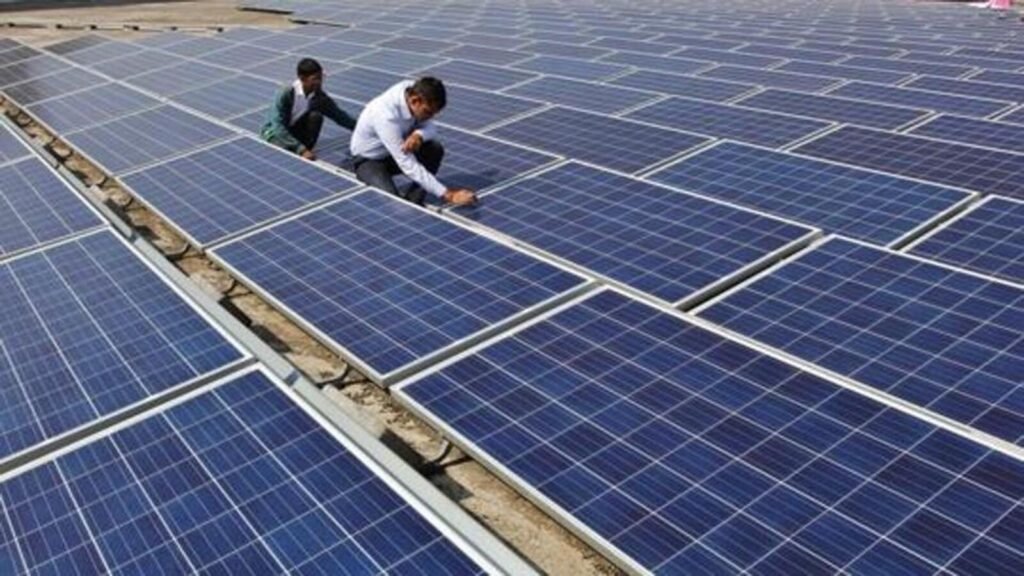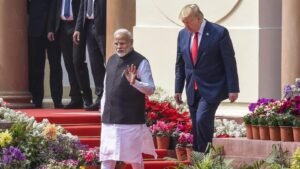
India’s Electricity Demand is Soaring, Driven by Economic Growth and Upcoming Drivers for Demand, Including from Cooling, Industry, Green Hydrogen, Mobility. The Government’s Plan to Install 500 GW of Non-Fossil Capacity by 2030 is Ambitious, but is this “Enough”?

Let’s Consider only meeting demand with new renewable energy (re, or even non-faossil, which adds new hydro and nuclear supply)-IF We Do Don’t Have Enessh Primarily Coal. As we dig deeper through a new csep study, we find that not only is the ambition insurance to meet increase increase Consider their time-of-day output, variable and uncertainty, and grid stability.
Balancing the electricity is one of the most complex tasks mankind has across, primarily because it relays on real-time balance demand and supply (Net of System Lossesses). The old calculation started with demand and then Built Out Enough Capacity to Meet Said Demand at All Times, Along with a Predictable Buffer. But with the risk of wind and solar, mainstays of India’s decarbonisation Ambitions, even supply is highly variable.
If we start with the energy requirements (Kilowatt-Hours, or KWH), No one knows precisely how much output a one mw wind turbine or solar plant will give, let alone was found will do. We Only Know Solar Mostly Follows a Bell curve of output, and wind is relatively seasonal. Even these depend on a range of variables we study, include location and the use of rooftop solar. We also have enormous uncertainty on the shape of the demand curve. While Mid-Day Demand is Rising, which is good for aligning with solar supply, we still have huge huge demand demand growth in the evening, and this will only Worsen with more Air Conditioning Loads.
Even under optimistic Scenarios where all planned re projects complete on time – a significant assumption give history history – OUR STUDY REVEALS That by 2030, Renewable Grohable Groweth Groweth Fall short by almost 12% in terms of meeting incremental annual energy.
The Challenge Backets even more acute when considering the Mismatch Between Supply and Demand during Specific Times of the Day or Year, which we Stodied Using ACTAUL HISTORICAL DATA COSS SEVERAL HIS Even if we sized wind and solar to provide enough power annually, the majority of time periods would eite eite either have large deficits or surpluses.
An obvious solution to renewable variableity and to bridge deficit periods with surplus is energy storage, like batteries or pumped hydro. However, Storage Systems Face Efficiency Losses (10–25%) and Seasonal Mismatches. Even if we oversize to overcome such, an economic penalty, our study highlights a major unanswered question – How do we have do we charge the batteries?
While re surpluses are invariable in the middle of the day, as we quantify, they vary enormously by season. The day you need the battery the most, there is a little re surplus with that previous day. Relying on Daily-Use Storage May Need Significant Overbuilding of Renewable Capacity, which is expected.
Addressing these challenges requires a range of policy and planning upgrades.
First, we have to focus on the overall portfolio, instead of a narrow silo approach. India’s Renewable Plans are heavily skewed Solar, which appears cheaper on average, but solar is very coincident in output, to the point it will soon believer surplus MID-DAY. Wind may appear more expensive on average than solar (Basis its lcoe, or levelized cost of energy), but it provides output more time of the day (it’s unfortunately also Alansonal). A more Balanced Solar-to-wind MIXID MIT MITIGATE SURPLUSES and Deficit But Scaling Up Wind Power Faces Challenges Such as Land Consstrants and Regional Disparities. Additionally, the growing share of rooftop solar in the total solar capacity Reduces the overall National Solar Output Due to the Inharently Lower Capacity Utilization Factor of Rooftop Solar.
Portfolio planning must also also Factor in Uncertainty, Risk, Resilience, and Greater Policy Choices (Like Subsidies/Free Power, which Skew Producer and Consider Incentrites). All these need far more transparent assumptions and granular data, a limitation today.
Second, we have to focus on scale, not just just capacity but also the right type. Doubling the pace of renewable installations is crucial, with an emphasis on high-Quality Projects that Deliver Better Capacity Utilization. Moreover, Grid Planning Must Incorprore Hourly and Seasonal Variable Rather Than Rely on Annual Average, Especially as New Demand Sources like Electric VEHICLES) and Gren Hydrogen Emerge. And while India Urgently Needs Storage, these ARENGE YET Nearly Cheap Enough to “End Coal”. Any Storage Needs Clear Plans for how it will charge – Storage should complete complement renewables, not continue the dependence on fossil fuels.
Lastly, we have to signal prisles and value correctly. Electricity pricing should be reflected time-of-day costs, encouraging industries and consumers to shift demand to periods when renewables are plentyful. Demand Response Programmes, Powered by Smart Grids and Technology, Can Help Dynamically Align Demand with Re Supply. We don’t just want to save energy but save it at the right time. Importantly, this isn’t just a supply problem.
India’s Energy Transition Stands at a Critical Juncture. The 2030 Targets are still Easier than future needs when the share of re will be higher and there will be more pressure on avoiding coal. Failing to address these challenges risks increasing India’s dependence on coal, undermining decarbonisation goals. Even with planned hydro and nuclear additions, fossils will fill the gap left by renewables. While this may be prudent economically and grid-second-with, there is an obvious environmental trade-off. The Good News is Clean-Tech Costs Continue to Fall. We should be ready to innovate, adapt and accelerate.
Rahul Tongia is Senior Fellow and Rohit Vijay is Research Associate, At the Center for Social and Economic Progress (CSEP), A New Delhi-Based Not-For-For-Profit Think Tank. The views expressed are personal





